Cities are not my natural habitat. [Ed: Quelle surprise!] Much of my feelings about cities have naturally been shaped by London which is an over-priced, over-populated metropolis with no architectural integrity that I’d rather avoid. Crowds aside, I am not a fan of traditional art galleries, museums, stage shows or shopping, which seem to be largely what cities are about. So what was I doing in Madrid, pray tell? Well, I went along for the ride on an advanced, high speed rail network to see a 30-minute Van Gogh Alive experience. Both of these were enjoyable and successful experiences.
Hold on too your hats: skipping to the punchline first, I really quite enjoyed Madrid. We didn’t do any shopping and I found I was quite happy to pound the paving slabs walking around the city gawping at some of the sights. It did not feel crowded and I wasn’t constantly avoiding a crush of bodies. I could walk comfortably. We must note, though, that this was off-season. We’ve been told, by a Madrid football fan, that in summer, Madrid can be baking hot, most of the Spanish leave and it is crawling with tourists. In addition to our Van Gogh show, we did visit two traditional art galleries, one of which housed a pair of Canalettos [Canaletti?] which is the kind of art I can appreciate. There should’ve been three but one was off being restored. Darn! There were a couple of Picassos, too. He’s one who was having a laugh. Oh, speaking of having a laugh, there was a Rothko, potentially the biggest joker of them all. Jeez!
We had stayed at a so-called hostal, the Hostal Bruña, which was family run and very conveniently placed in the heart of Madrid, within easy walking distance of the train station (Puerta de Atocha), the Prado Museum and a maze of narrower streets leading up to Plaza Major. From what I can make out, a hostal offers rooms but no restaurant/food service. Our little 2-roomed apartment was on the 4th floor of a building and was a fully equipped self-catering apartment, though I wasn’t about to start cooking, with en-suite facilities. The room was cleaned and tidied daily for us. My only downside was sheets and blankets which I really don’t get on well with in these days of duvets. I imagine it makes the laundry service simpler, though. Francine and I paid 238€ for three nights.
 We tried a few of the local bars, of course. We had to get used to big city prices paying about 2.50€ for a beer instead of the 1.50€ that we’re used to in Jalón. My favourite bar, other than when it was invaded by the remnants of a prison service protest [more later], was El Hecho [H completely silent]. Our first visit was great and, in common with most of Spain, each drink ordered comes with a tapa of one kind or another. This is not a luxury that we enjoy in our Costa Blanca region, for some reason. In much of Spain, you can probably get away with just ordering drinks and not bothering to order food at all, just take the tapas. One of our acquaintances figured out that it was bad practice to order a tanke [large beer] ‘cos you only got one tapa whereas with two cañas [smaller beer] you got a tapa with each. Honestly, some people. 🙂
We tried a few of the local bars, of course. We had to get used to big city prices paying about 2.50€ for a beer instead of the 1.50€ that we’re used to in Jalón. My favourite bar, other than when it was invaded by the remnants of a prison service protest [more later], was El Hecho [H completely silent]. Our first visit was great and, in common with most of Spain, each drink ordered comes with a tapa of one kind or another. This is not a luxury that we enjoy in our Costa Blanca region, for some reason. In much of Spain, you can probably get away with just ordering drinks and not bothering to order food at all, just take the tapas. One of our acquaintances figured out that it was bad practice to order a tanke [large beer] ‘cos you only got one tapa whereas with two cañas [smaller beer] you got a tapa with each. Honestly, some people. 🙂
The best food we had by far was in the cosy (<12 tables) Taberna el Sur. Initially, we just went in for a drink. Then, having already given us olives with our drinks, they brought out a beautiful tapa of padron peppers with morcilla. I’m afraid Spanish morcilla has completely ruined British black pudding for me. I’m thoroughly hooked. Well, that did its job and hooked us again; we ordered our dinner there. Jim and I both had the solomillo [fillet steak] stuffed with goats cheese which was simply superb. Francine opted for a prawn risotto but declared mine to be better. [Gloat] I rarely eat beef and even more rarely do I order it in a restaurant but I’m glad I did. Interestingly, there was no “how do you want that cooked?” question; you just got it the way the chef liked it which was probably medium-rare(ish) and suited me fine. Decisions were off, mercifully. I don’t care for the assault course of questions that can accompany ordering a meal. Just bring me some good food, goddamit. 🙂 We returned a second time for lunch and ate well again, though rather too much.
 We’d seen two protests in Madrid, too. They seem to be timetabled/booked, there being almost one a day. We’d wanted to find kilometre zero, the start of the distances in Spain, at the Plaza Puerta del Sol but a crowd were setting off explosions and waving Basque flags. Being chickens, we went another way. Then we found a demonstration by the prison service complaining about something killing their jobs. These were the weary protesters who later invaded Bar El Hecho on our second visit. They were behaving perfectly well but the sheer number of them made it too difficult to get served so we moved on. There had been a protest against Uber by taxi drivers, too. This is a modern technical revolution, an equivalent of the industrial revolution. Along with shops being World Wide Webbed out of business, the fabric of society is changing.
We’d seen two protests in Madrid, too. They seem to be timetabled/booked, there being almost one a day. We’d wanted to find kilometre zero, the start of the distances in Spain, at the Plaza Puerta del Sol but a crowd were setting off explosions and waving Basque flags. Being chickens, we went another way. Then we found a demonstration by the prison service complaining about something killing their jobs. These were the weary protesters who later invaded Bar El Hecho on our second visit. They were behaving perfectly well but the sheer number of them made it too difficult to get served so we moved on. There had been a protest against Uber by taxi drivers, too. This is a modern technical revolution, an equivalent of the industrial revolution. Along with shops being World Wide Webbed out of business, the fabric of society is changing.
 Killing our last morning, Francine had been taken by the complete external wrapping, in multicolored canvases, of the Prado Museum. There are folks who regard wrapping parts of the coastline as art so perhaps this, too, was art? Francine rarely takes a straightforward picture these days, preferring a more impressionist approach using the techniques of ICM and/or multiple exposure. Enter Francine Rothko and one of her multiple exposure impressions of the wrapped Prado.
Killing our last morning, Francine had been taken by the complete external wrapping, in multicolored canvases, of the Prado Museum. There are folks who regard wrapping parts of the coastline as art so perhaps this, too, was art? Francine rarely takes a straightforward picture these days, preferring a more impressionist approach using the techniques of ICM and/or multiple exposure. Enter Francine Rothko and one of her multiple exposure impressions of the wrapped Prado.
 We’re into poor season as regards wildlife but we did see some parakeets flying around outside the Prado. Initially I glibly assumed these were the Ring-necked Parakeets that we’ve see spreading across England recently. Francine did take a straight shot which made us realize that these were different, there being no ring around the neck. These were Monk Parakeets (Myiopsitta monachus), a South American native and a monotypic genus, for those that care about such things.
We’re into poor season as regards wildlife but we did see some parakeets flying around outside the Prado. Initially I glibly assumed these were the Ring-necked Parakeets that we’ve see spreading across England recently. Francine did take a straight shot which made us realize that these were different, there being no ring around the neck. These were Monk Parakeets (Myiopsitta monachus), a South American native and a monotypic genus, for those that care about such things.
Our AVE train ride back was swift, on time and comfortable. Nothing like an English rail service, then. Being mid-week, instead of being accompanied by the rugrats we’d shared the carriage with on our Sunday journey out, we were now accompanied by the almost constant bings, bongs and musical ring tones of messages, emails and phone calls that is a part of the modern world we have created. No wonder I crave silence and wildlife.
So, I quite enjoyed Madrid, though I wouldn’t necessarily rush back for a repeat visit. I quite like Valencia, too. Maybe it’s not generically cities that are unappealing, maybe it’s British cities that are unappealing.
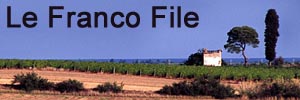















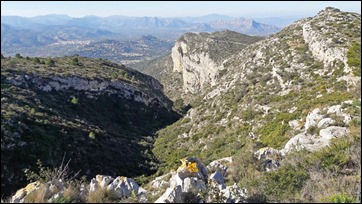

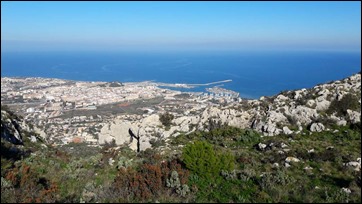
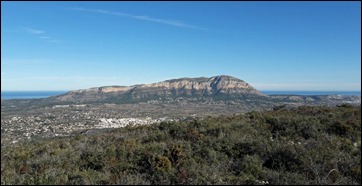

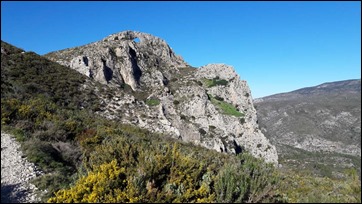
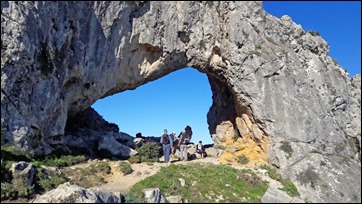
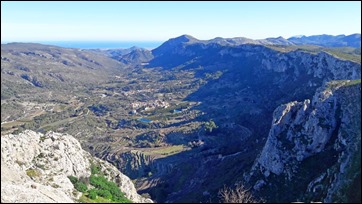












Recent Comments